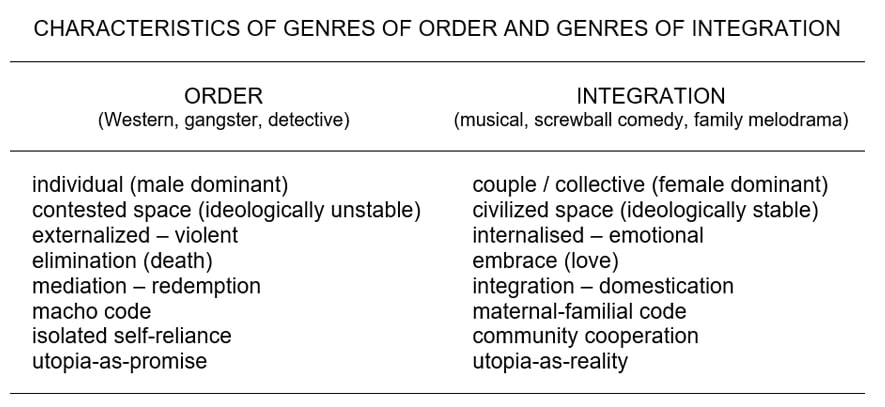Thomas Schatz
Thomas Schatz (1981) believed genre films were a “social force” because they reflected our values and ideology, but also raised questions about important cultural issues. He argued genre filmmaking followed two dominant narrative strategies: order and integration.
Genres of order highlighted “the values of social order” because they focused on a protagonist who wanted to eliminate a physical threat to society.
By contrast, genres of integration were produced to “celebrate the values of social integration”. This function is epitomised by musicals and melodramas where the relationship between the romantic leads reinforces the dominant ideology of love and courtship.
Schatz summarised the difference between the narrative strategies in a table:

Thomas Schatz defined genre as “one-dimensional characters acting out a predictable story pattern within a familiar setting”. He also noted “genre films comprised the vast majority of the most popular and profitable productions”. One of the reasons genre films are so successful is because they appeal to our previous experiences and satisfy our expectations.
Rather than a linear narrative which relied on causality, Schatz suggested genre filmmakers took a thematic approach based on the “opposed value systems” and ideological conflict. He divided the narrative into four parts:
- Establishment – the dramatic conflict is encoded via various narrative and iconographic cues.
- Animation – the actions and attitudes of the characters will draw attention to the conflict.
- Intensification – through conventional situations and dramatic confrontations, the conflict reaches a crisis.
- Resolution – the physical or ideological threat is eliminated, and the appropriate order is (briefly) restored.
Schatz suggested the most significant feature of a narrative was its resolution because it offered some sort of solution to the ideological conflicts in our own lives.
